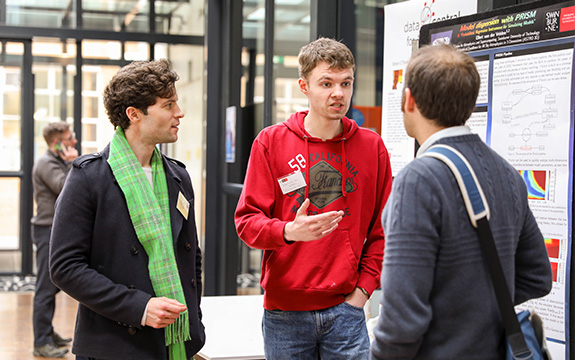Swinburne hosts Astronomical Society of Australia conference

In Summary
- The Annual Scientific Meeting is the largest astronomy meeting in Australia
- Scientists from all over the nation will attend to discuss their latest research
- This is the 52nd meeting for the Astronomical Society of Australia
Swinburne University of Technology will host the Annual Scientific Meeting (ASM) of the Astronomical Society of Australia (ASA) for 2018 at its Hawthorn campus from 25 – 29 June.
The ASM is the largest national astronomy meeting in Australia and a rare chance for hundreds of astronomers to meet, share their latest research and forge new collaborations.
Scientists from all over Australia will meet at Swinburne to speak on a range of topics, including galactic astronomy, high energy astrophysics, big data and computing, extragalactic astronomy, cosmology and the future of Australian optical astronomy.
Swinburne’s Associate Professor Alan Duffy says one of the meeting themes will focus on the challenges of astronomy in the petascale data era, addressing the continuing rise of machine learning in analysis of astronomical big data.
“In the era of high speed survey telescopes we now have datasets too large and too complex to explore to their fullest without applying the latest artificial intelligence techniques,” Associate Professor Duffy says.
“I am excited to see the research from the dozens of new researchers involved in Australia’s latest ARC Centres of Excellence in All Sky Astrophysics in 3D (ASTRO3D) and Gravitational Wave Discovery (OzGrav) who will drive Australian findings to an international level.”
Swinburne’s astronomy research
Associate Professor Duffy will present research on the economics of galaxies’ growth, which shows that in the first galaxies, the demand for gas to form into stars could not keep pace with the rate of infalling gas.
“The internal gas consumption can’t increase fast enough as supply overwhelms demand, in economics terms the galaxy is in ‘recession’. It’s only when the Universe expands over billions of years do the rates of material falling into these growing galaxies slow enough to allow the galaxy to find that balance we see today,” Associate Professor Duffy says.
New research from Swinburne will also be discussed, such as Igor Andreoni’s talk on ‘new frontiers in optical fast-transient discovery’, Leonie Chevalier’s discussion of ‘the globular cluster system of NGC 4526’ and Michelle Cluver’s paper on ‘Cool and Close Encounters of the HI Kind’.
The ASA was formed in 1966 to provide a community forum for Australian astronomers.

